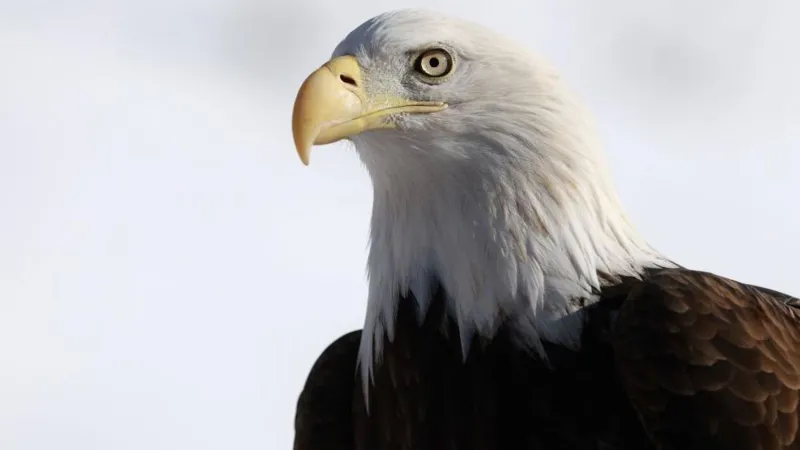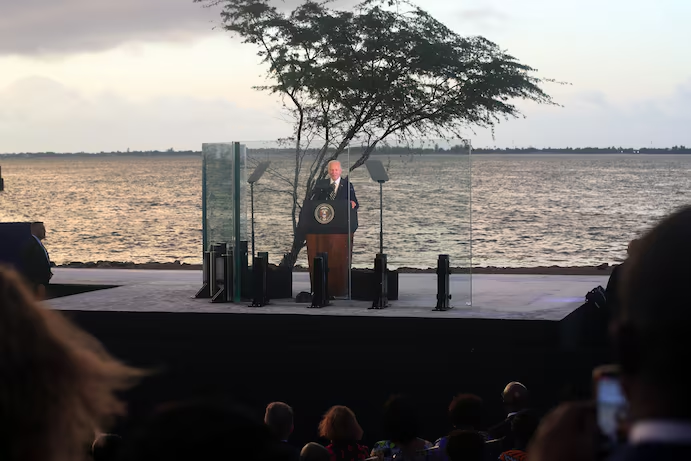Bald eagle officially declared US national bird after 250 years

In a momentous declaration, the Bald Eagle has officially been recognized as the national bird of the United States, following 250 years of symbolic association with the country. The decision, which the U.S. Congress made after a long history of discussion and informal recognition, marks a significant milestone in the country’s appreciation for the iconic bird, a symbol of freedom and strength.
The Bald Eagle, scientifically known as Haliaeetus leucocephalus, was first chosen as the national bird of the U.S. in 1782 when the Great Seal of the United States was designed. Its association with American identity has grown over the centuries, and its powerful presence has come to symbolize the country’s independence, courage, and perseverance. However, despite this long history, the bird has never been formally declared the national bird by an act of Congress until now.
The Bald Eagle’s designation as the national bird is the culmination of a years-long campaign by conservationists, environmental groups, and public advocates who sought to ensure that the bird received the official recognition it deserved. The announcement comes after decades of conservation efforts that have successfully brought the Bald Eagle population back from the brink of extinction. Once listed as an endangered species due to habitat loss, hunting, and the widespread use of pesticides, the Bald Eagle has made a remarkable recovery in recent years, with its numbers steadily rising across the country.
This symbolic milestone comes after years of advocacy and public support for the Bald Eagle, which has long been seen as a unifying symbol for Americans. Its majestic appearance, with a white head and tail, contrasted against a dark brown body, has made it a recognizable figure not only in the United States but around the world. The Bald Eagle’s soaring flight and piercing call have become emblematic of the country’s spirit of independence, resilience, and freedom.
A History of Symbolism and Recognition
The Bald Eagle was chosen as the national symbol of the U.S. in 1782 when the Continental Congress officially adopted it for the Great Seal of the United States. The bird’s selection was a reflection of its long association with the country’s values. Early American leaders, including Benjamin Franklin, were passionate about selecting a bird that could represent the newly formed nation. Franklin famously advocated for the wild turkey to be chosen, arguing that the Bald Eagle was a “bad moral character,” but his suggestions were not embraced.
The Bald Eagle’s selection as the national symbol was not without controversy, yet it prevailed due to its majesty, strength, and presence in North America. Over the centuries, the eagle has become closely associated with the American Revolution and the founding principles of the United States. As a top predator, the Bald Eagle symbolizes the nation’s resilience and dominance in the natural world.
Despite its early adoption as the national symbol, the Bald Eagle’s population began to decline in the 19th and 20th centuries due to hunting, poisoning, and habitat destruction. The widespread use of DDT, a pesticide, caused the thinning of eagle eggshells, leading to reduced reproduction rates. In 1967, the Bald Eagle was placed under the Endangered Species Act, and efforts to protect the bird began in earnest.
The Bald Eagle’s Remarkable Recovery
Thanks to conservation initiatives, the Bald Eagle’s population has rebounded dramatically. The U.S. Fish and Wildlife Service and numerous state agencies have worked tirelessly to protect eagle habitats, regulate hunting practices, and restrict the use of harmful pesticides. As a result of these efforts, the Bald Eagle was removed from the endangered species list in 2007, and its population continues to thrive across North America.
In recent decades, the Bald Eagle has become a common sight in the U.S., particularly in the Midwest and along the coasts. The bird is often spotted near large bodies of water where it hunts for fish, its primary food source. In fact, the Bald Eagle has become such a recognizable and revered species that its image can be found on national symbols, coins, and various government documents. It also serves as a central figure in numerous state and federal conservation programs.
The decision to officially declare the Bald Eagle as the U.S. national bird represents a formal recognition of the species’ importance not only to the nation’s history but also to its future. The symbolic gesture highlights the nation’s commitment to environmental conservation and the protection of wildlife, and it further solidifies the Bald Eagle’s role as a unifying emblem for the American people.
Public Reactions and the Future of the Bald Eagle
Conservationists, environmentalists, and the American public have celebrated the official recognition of the Bald Eagle. Many have expressed their gratitude for the bird’s recovery and the commitment of those who helped bring it back from the brink of extinction. Environmental groups have lauded the decision as a victory for conservation efforts and a powerful reminder of the importance of protecting natural habitats and wildlife.
In addition to its symbolic importance, the Bald Eagle’s recovery serves as a success story for environmental conservation programs in the U.S. It demonstrates that, with concerted efforts and proper resources, endangered species can be brought back to stable population levels. The continued protection of the Bald Eagle will remain a priority for conservationists, as the bird’s habitats must still be safeguarded from threats such as climate change, pollution, and human encroachment.
As the Bald Eagle is officially recognized as the national bird, it is expected to continue to inspire future generations to appreciate and protect the natural world. Its soaring presence across the skies serves as a reminder of the enduring power of nature and the importance of preserving the country’s natural heritage for years to come.
In conclusion, the Bald Eagle’s official designation as the U.S. national bird after 250 years of symbolic recognition is a significant moment in the nation’s history. The bird’s recovery, from the brink of extinction to a symbol of national pride, underscores the power of conservation and the deep connection between the American people and their natural environment. As the Bald Eagle continues to soar across the skies, it will forever remain a powerful emblem of freedom, strength, and resilience.






